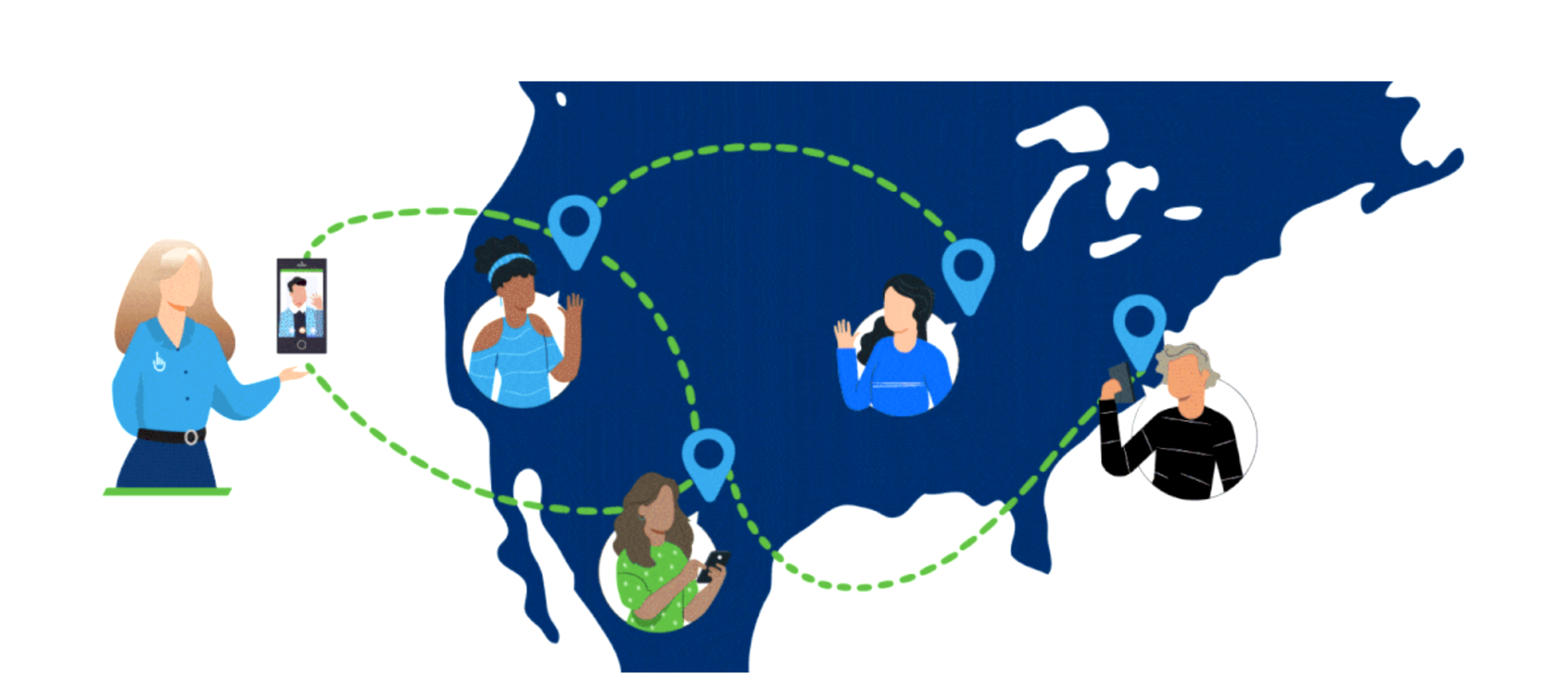Video Banking
Decentralized Banking
in 2022
Decentralized Banking in 2022
“It feels pretty safe to say that, as we were all leaving our offices in March 2020, none of us expected that the pandemic would stretch into the third year. But the rise of the latest variant and other factors make it increasingly likely that a dominant theme in banking in 2022 will be how financial services providers deal with the lingering impacts of COVID-19.” — Terry Badger, CFA, managing editor at BAI.
As COVID continues to affect the nation’s community banks and credit unions, maintaining interactions with banking customers while keeping them safe is more critical than ever. Banks need a decentralized banking solution to service their current customers and acquire new ones.


Consumers are about convenience, comparing their customer expectations to other industries that have moved to instant gratification. For banks and credit unions to acquire new customers and provide the high-touch servicing that customers demand, you have to think outside of the branch four-walls to communicate where customers are.
BAI research found that by 2024, consumers expect 61% of their banking business to be digital and 39% to involve human assistance.
Financial institutions must think beyond their industry with decentralized banking. Customers compare experiences and make decisions on “ease of doing business.” With over 59% of customers opening a deposit account online in 2020, and now community banks and credit unions don’t just have to compete with technology advanced mega banks but with neo banks and direct banks not built on historical “branch hours of doing business.” This has forced banks that have lagged in advanced digital solutions to play catch-up when thinking about the customer experience in the customer’s shoes.
“When it comes to choosing CRM and engagement platforms, financial institutions have two options: an engine that’s ready to run or a set of engine parts requiring assembly. While starting with just parts has its appeal—you can realize your vision for CX engagement, building the platform out as you go—it requires significant cost and time, which raises the risk that you’ll fail to reach your desired ROI.” — Rebecca Martin, chief marketing officer at Total Expert.
The center gear in the system of decentralized banking is Intelligent Routing.
Where you can take inbound requests to route to a group of available advisors, regardless of location. With smaller branch footprints, financial institutions are using our digital banking platform to provide access to the right resources at the right time, whether the customer walks into a branch location or is sitting at home.
We don’t know if and when a new normal exists but we do know community banks and credit unions had to adapt overnight, and from that, we have lessons learned during COVID. Executives had to virtualize their workforce, reinvent their digital customer experiences, and reduce costs with narrowing margins.
The change in consumer behaviors to digital sales, online banking, and servicing makes for hybrid banking models of the future.
It’s imperative that financial institutions are strategic about their digital and operational priorities for 2022. In order to retain your current customers and acquire new products from them, you must provide convenience and increased digital touch-points wherever they are.
Customers are buying on service vs. rates. Providing your relationship managers the ability to plug in proactive video banking touch-points with their clients allows them to flip the 80/20 rule.
To read more about Decentralized Banking in 2022 see the Playbook for Success infographic, contained in the Executive Guide To Budgeting For Video Banking in 2022, or reach out for a demo.
